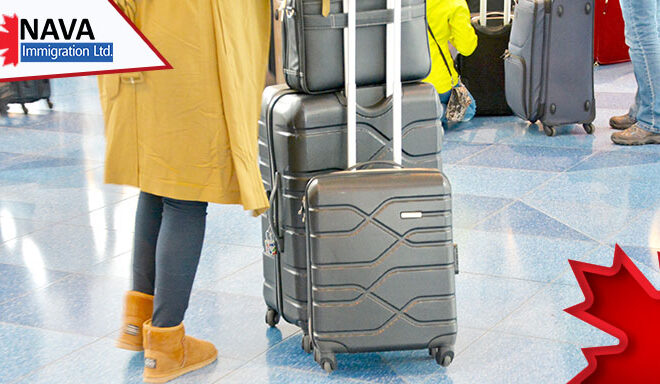Alberta’s Changes to Healthcare Delivery: Newcomer Benefits
Alberta’s changes to the healthcare delivery system are meant to improve access to care. Danielle Smith, Alberta’s Premier, declared earlier this month. She stated that the current AHS system in the province, i.e., Alberta Health Services System, will be divided into four parts to enhance access to care.
In early November, Smith emphasized this plan in a press conference and restated that these changes would organize Alberta’s healthcare delivery system by function. Moreover, this will help hire more staff, enhance access to innovative treatments, and lower the wait times for emergency rooms and surgeries.
More specifically, this decentralization of healthcare in the province will benefit special areas. For instance, healthcare organizations will be able to deliver healthcare services in primary care, continuing care, mental health/addiction care and acute care.
Alberta’s Changes to Healthcare Delivery and How it Can Impact Newcomers?
According to the Permanent Resident data for 2022, around 49,460 new immigrants arrived in Alberta in the past year.
The intended modifications to Alberta’s healthcare delivery system will affect a significant portion of Canadian new immigrants. This is because Alberta was recorded as the fourth-largest destination for immigrants as per the number of PRs.
Furthermore, the consequences of the changes to the healthcare delivery system can be seen in various ways. This can range from healthcare access to job opportunities throughout the province.
Employment Opportunities in Alberta
According to Smith, the Premier of Alberta, among the different objectives of the reform, hiring additional professionals in the healthcare sector is one key objective. This will presumably increase the employment opportunities in the province for future newcomers to Canada.
Signs of this potential can be seen in various things, including the implementation of new category-based draws under the Express Entry.
These draws differ from the standard Express Entry Draws, which usually prioritize the candidates’ Comprehensive Ranking System (CRS) score.
Instead, this new category draws focus on selecting candidates based on some defined abilities and previous job experience.
For this year, the immigration department of Canada, IRCC, selected the below-stated six categories to prioritize in category-based draws. This means that in 2023, candidates in these draws are prioritized if they are:
- Proficient in the French language or have work experience in any one of the five sectors:
- Science, Engineering, Technology and Mathematics (STEM)
- Trades
- Transportation
- Agriculture and Agri-Food
- Healthcare
Since Immigration, Refugees and Citizenship Canada (IRCC) has included the healthcare occupations in the 2023 category list for new selection draws, it’s evident that Canada needs more healthcare professionals.
Thus, with the upcoming Alberta’s changes to healthcare delivery system, future new immigrants will have more opportunities to immigrate to, work, and live in the province.
Alberta’s Expansion in the Recent Years
Alberta attained the fourth position among the most popular destinations for immigrants. Besides this, the province is also experiencing a rise in its population growth over the past few years.
In reality, as per the Statistics Canada data in a CTV report of September, On July 1 of this year, the population of Alberta was 4.7 million. This is a 4.1% boost from the population recorded on July 1 last year due to an addition of 184,400 individuals.
Again, according to the same report, the population of Alberta has recently expanded compared to other provinces. This surpassed the national average by 1.1 % points.
Most of Alberta’s population expansion may be attributed to international immigration. This has accounted for 61% of Alberta’s total provincial population increase, about 112,562 people.
As a result of this growth, the province of Alberta has experienced a rise in its labor force at the fastest pace annually since 2007. This excludes the period of COVID recovery.
As per Chief Economist Mark Parsons and ATB Financial Vice President, immigration of individuals from across the world to Alberta provides a consistent flow of workers to fill some of these job vacancies.
As noted in the CTV’s report, migration from other parts of Canada, mainly from Ontario and British Columbia, is also a driving factor that accounts for around 31% of the province’s population increase, about 56,245 people.
How can you Immigrate to Alberta?
Alberta is a popular destination for immigrants from across the world. The province offers various pathways for all types of newcomers, varying from temporary foreign workers to entrepreneurs.
Alberta has its Provincial Nominee Program (PNP), termed the Alberta Advantage Immigration Program (AAIP). The provincial system offers a variety of streams for entrepreneurs as well as workers to immigrate to the province. Each stream has different eligibility requirements, such as the requirement for an existing job offer prior to application.
The following outlines the list of Alberta Advantage Immigration Program (AAIP) streams.
Immigration Streams for Employees
- Alberta Opportunity Stream – This is mainly for employees already working in an eligible occupation in the province. It’s a route to permanent residence in Alberta for skilled workers.
- Rural Renewal Stream – It’s a pathway for prospects with an existing Alberta-based job letter to work in a rural community in Alberta.
Immigration Streams for Entrepreneurs
- Graduate Entrepreneur Stream – It’s a pathway for foreign graduates of a specified post-secondary institution in Alberta who desire to begin a business in the province.
- Foreign Graduate Entrepreneur Stream – It’s a pathway for individuals who graduated from an institution outside Canada and desire to initiate a business in Alberta.
If you desire to immigrate to Canada and are looking for suitable ways, understanding different immigration pathways and their eligibility can help you select the best Canadian route.





